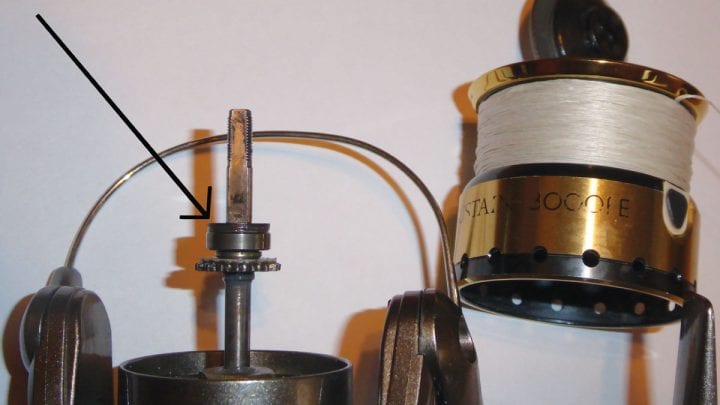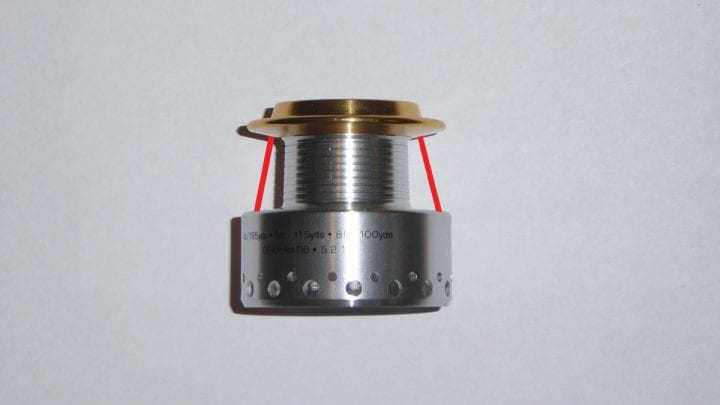When it comes to recreational fishing, the phrase casting a line is exactly what you’re doing. Regardless of your fishing rod, reel, tackle or bait, without your fishing line, this endeavor could never take place.
Average anglers will typically gauge their purchase of fishing line by weight and price – often the least expensive one – and how many yards they can get for their buck.
Their purchased line may work, and they might even land a nice fish.
In most cases, however, if fishing line is judged exclusively with this criteria, anglers find themselves with bird nests, tangles, non-flexible lines, curled up lines, and worst of all, the loss of a great fish because the line failed.
Deciding what type of line to purchase can be more complicated than you may think.
There are important decisions to make, and it is all according to the rod and reel you are using and what type of casting you are doing.
Most fishing rods have a weight range for the fishing line required
Most fishing rods have a weight range for the fishing line required. For instance, if you look on the side of your rod, usually on the underside past the handle, you might see a rod line weight of 10- to 17-lb. test.
The same requirements are listed on most fishing reels, but fishing reels will also supply an estimate of how many yards the reel will accommodate for an average of three line weights.
Thus, a good place to start is by checking these ratings on your rod and reel. To aid you with this decision, I will explain some differences in fishing lines.
The three main types of fishing lines used today are braided, monofilament and fluorocarbon.
The diameter (thickness of the line) of each of these lines will increase with the higher weight rating of line; and the thicker the line is, the amount of yardage you can put on your fishing reel will be reduced.
Braided lines are amongst the strongest of the three. It has virtually no stretch, and its diameter is drastically reduced compared to its weight rating, allowing you to spool your reel with a higher pound test and more yardage.
Braided lines are often coated with a covering to help them move smoothly through your rod guides, but this coating will eventually wear off, resulting in a rougher line with decreased color.
Braided lines are not transparent and can be seen easily in clearer water, so using a transparent leader is an important combination when using braid.
Monofilament line can be colored and come in various qualities, with some performing better than others.
Monofilament line will create a memory in the line, meaning it can hold a round coil look in the line due to the wrap around your reel’s spool, monofilament will also stretch under a load, making hook sets slower.
Fluorocarbon lines in most cases are clear.
Fluorocarbon is a stiff line and will hold more of a memory than monofilament, but fluorocarbon is more abrasive-resistant than monofilament and has less stretch.
During summer months when the temperature is hotter, both fluorocarbon and monofilament will have less of a memory and be more flexible.
When using spinning reels, it is important to observe the line lay of the reel
However, when using monofilament in the winter in really cold climates, keep in mind that it becomes hard and greatly reduces its flexibility, it generates even more of a memory, and it can become brittle.
I, personally, have not experienced braid being affected by weather conditions.
When using spinning reels, it is important to observe the line lay of the reel, which means as you fill the spool, you want your fishing line to spool evenly from top to bottom.
If the line is not even on a spinning reel when casting, you may find a number of loops moving forward at one time, creating a bird nest in the middle of your fishing rod.
You may also enjoy reading Making Sense Of Fly Rods & Line Selections
This will discourage anyone from using the line purchased; but in most cases, this is not the line’s fault.
If you see a coning effect, when more line is being wrapped up towards the top of the spool or wrapping towards the bottom of the spool, you may have to adjust your spool height on your reel.
Higher quality reels will usually have washers in the box with the purchase that will allow you to do just this.

This is done by applying the washers under the spool on the oscillating shaft (Figure A). So, if your line lay is heavier towards the bottom of your spool (Figure B), your spool needs to be lowered by removing some of these washers.

If your line lay is heavier towards the top (Figure C), your spool needs to be raised, and you will have to add washers to the shaft.

Once you have finally evened the line of your reel, you should find yourself casting like a champ with less headaches and more time to enjoy a day on the water.
I hope this helps you with your next fishing adventure.
Until next time, good luck out there and have fun fishing! To view some fishing adventures, go to my YouTube Channel “Fishing with Jiggin Jerry” or www.jigginjerry.net.
You may also enjoy reading Inshore Rigging Techniques For The Lowcountry



